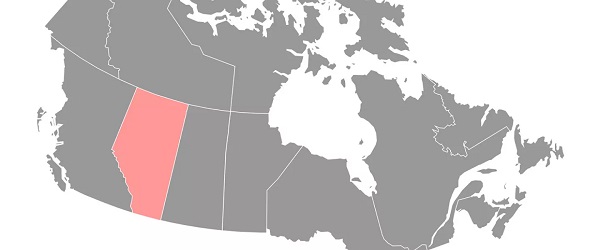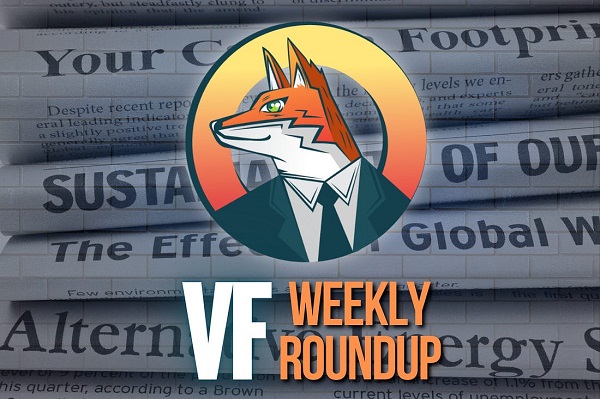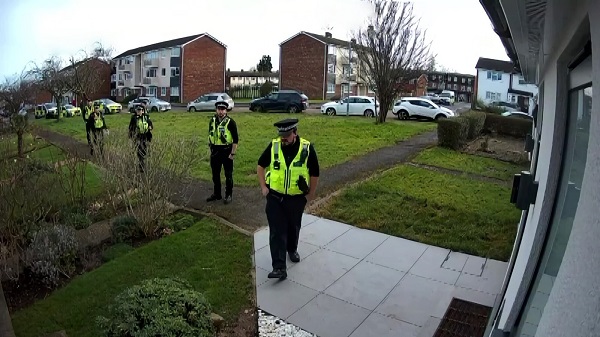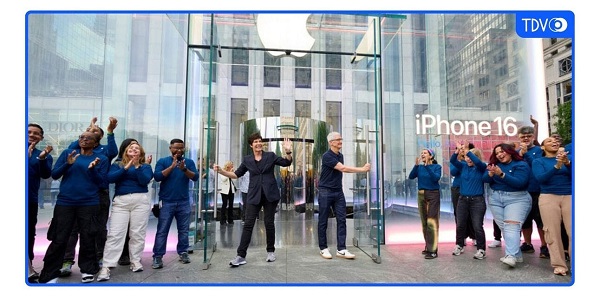Alberta
Alberta Relaunch stage 1 mostly a go for Thursday – Restrictions for Calgary and Brooks

From the Province of Alberta
Alberta is ready for relaunch
Stage one – all areas of Alberta except cities of Calgary and Brooks
- With increased infection prevention and control measures to minimize the risk of increased transmission of infections, some businesses and facilities can start to resume operations on May 14 in all areas except the cities of Calgary and Brooks:
- Retail businesses, such as clothing, furniture and bookstores. All vendors at farmers markets will also be able to operate.
- Museums and art galleries.
- Daycares and out-of-school care with limits on occupancy.
- Hairstyling and barbershops.
- Cafés, restaurants, pubs and bars will be permitted to reopen for table service only at 50 per cent capacity.
- Day camps, including summer school, will be permitted with limits on occupancy.
- Post-secondary institutions will continue to deliver courses; however, there will be more flexibility to include in-person delivery once the existing health order prohibiting in-person classes is lifted.
- Places of worship and funeral services, if they follow specific guidance already online.
- The resumption of some scheduled, non-urgent surgeries will continue gradually.
- Regulated health professions are permitted to offer services as long as they continue to follow approved guidelines set by their professional colleges.
- In Calgary and Brooks, the relaunch will be gradual over 18 days due to higher COVID-19 case numbers in these communities.
Stage one – cities of Calgary and Brooks
Opening May 14:
- Retail businesses, such as clothing, furniture and bookstores. All vendors at farmers markets will also be able to operate.
- Museums and art galleries.
- Daycares and out-of-school care with limits on occupancy.
- The resumption of some scheduled, non-urgent surgeries will continue gradually.
- Regulated health professions are permitted to offer services as long as they continue to follow approved guidelines set by their professional colleges.
Opening May 25:
- Hairstyling and barbershops.
- Cafés, restaurants, pubs and bars will be permitted to reopen for table service only at 50 per cent capacity.
Opening June 1:
- Day camps, including summer school, will be permitted with limits on occupancy.
- Post-secondary institutions will continue to deliver courses; however, there will be more flexibility to include in-person delivery once the existing health order prohibiting in-person classes is lifted.
- Places of worship and funeral services, if they follow specific guidance already online.
The new alberta.ca/bizconnect web page provides business owners with information on health and safety guidelines for general workplaces, as well as sector-specific guidelines for those able to open in stage one. Businesses allowed to reopen during stage one will be subject to strict infection prevention and control measures, and will be carefully monitored for compliance with public health orders. It will be up to each business operator to determine if they are ready to open and ensure all guidance has been met.
Physical distancing requirements of two metres remain in place through all stages of relaunch and hygiene practices will continue to be required of businesses and individuals, along with instructions for Albertans to stay home when exhibiting symptoms such as cough, fever, shortness of breath, runny nose, or sore throat. Albertans are also encouraged to wear non-medical masks when out in public places where keeping a distance of two metres is difficult.
Still not permitted in stage one:
- Gatherings of more than 15 people unless otherwise identified in public health orders or guidance.
- Gatherings of 15 people or fewer must follow personal distancing and other public health guidelines.
- Arts and culture festivals, major sporting events and concerts, all of which involve close physical contact.
- Movie theatres, theatres, pools, recreation centres, arenas, spas, gyms and nightclubs will remain closed.
- Services offered by allied health disciplines like acupuncture and massage therapy.
- Visitors to patients at health-care facilities will continue to be limited; however, outdoor visits are allowed with a designated essential visitor and one other person (a group of up to three people, including the resident), where space permits. However, physical distancing must be practised and all visitors must wear a mask or some other form of face covering.
- In-school classes for kindergarten to Grade 12 students.
Recommendations:
- Travel outside the province is not recommended.
- Remote working is advised where possible.
- Encourage Albertans in Calgary and Brooks to wait to access services upon reopening in their communities rather than travelling for services.
- Albertans are encouraged to download the ABTraceTogether mobile contact tracing app and use it when in public.
Progression to stage two will be determined by the success of stage one, considering health-care system capacity, hospitalization and intensive care unit (ICU) cases, and infection rates. For more information, visit alberta.ca/RelaunchStrategy.
Quick facts
- Relaunch stages will include an evaluation and monitoring period to determine if restrictions should be adjusted. Triggers that will inform decisions on the lessening or tightening of restrictions include hospitalizations and intensive care unit (ICU) occupancy.
- Confirmed cases, the percentage of positive results and the rate of infection will be monitored on an ongoing basis to inform proactive responses in localized areas of the province.
- Decisions will be applied at both provincial and local levels, where necessary. While restrictions are gradually eased across the province, an outbreak may mean that they need to be strengthened temporarily in a local area.
- The most important measure Albertans can take to prevent respiratory illnesses, including COVID-19, is to practise physical distancing and good hygiene.
- This includes cleaning your hands regularly for at least 20 seconds, avoiding touching your face, coughing or sneezing into your elbow or sleeve, and disposing of tissues appropriately.
2025 Federal Election
Next federal government should recognize Alberta’s important role in the federation

From the Fraser Institute
By Tegan Hill
With the tariff war continuing and the federal election underway, Canadians should understand what the last federal government seemingly did not—a strong Alberta makes for a stronger Canada.
And yet, current federal policies disproportionately and negatively impact the province. The list includes Bill C-69 (which imposes complex, uncertain and onerous review requirements on major energy projects), Bill C-48 (which bans large oil tankers off British Columbia’s northern coast and limits access to Asian markets), an arbitrary cap on oil and gas emissions, numerous other “net-zero” targets, and so on.
Meanwhile, Albertans contribute significantly more to federal revenues and national programs than they receive back in spending on transfers and programs including the Canada Pension Plan (CPP) because Alberta has relatively high rates of employment, higher average incomes and a younger population.
For instance, since 1976 Alberta’s employment rate (the number of employed people as a share of the population 15 years of age and over) has averaged 67.4 per cent compared to 59.7 per cent in the rest of Canada, and annual market income (including employment and investment income) has exceeded that in the other provinces by $10,918 (on average).
As a result, Alberta’s total net contribution to federal finances (total federal taxes and payments paid by Albertans minus federal money spent or transferred to Albertans) was $244.6 billion from 2007 to 2022—more than five times as much as the net contribution from British Columbians or Ontarians. That’s a massive outsized contribution given Alberta’s population, which is smaller than B.C. and much smaller than Ontario.
Albertans’ net contribution to the CPP is particularly significant. From 1981 to 2022, Alberta workers contributed 14.4 per cent (on average) of total CPP payments paid to retirees in Canada while retirees in the province received only 10.0 per cent of the payments. Albertans made a cumulative net contribution to the CPP (the difference between total CPP contributions made by Albertans and CPP benefits paid to retirees in Alberta) of $53.6 billion over the period—approximately six times greater than the net contribution of B.C., the only other net contributing province to the CPP. Indeed, only two of the nine provinces that participate in the CPP contribute more in payroll taxes to the program than their residents receive back in benefits.
So what would happen if Alberta withdrew from the CPP?
For starters, the basic CPP contribution rate of 9.9 per cent (typically deducted from our paycheques) for Canadians outside Alberta (excluding Quebec) would have to increase for the program to remain sustainable. For a new standalone plan in Alberta, the rate would likely be lower, with estimates ranging from 5.85 per cent to 8.2 per cent. In other words, based on these estimates, if Alberta withdrew from the CPP, Alberta workers could receive the same retirement benefits but at a lower cost (i.e. lower payroll tax) than other Canadians while the payroll tax would have to increase for the rest of the country while the benefits remained the same.
Finally, despite any claims to the contrary, according to Statistics Canada, Alberta’s demographic advantage, which fuels its outsized contribution to the CPP, will only widen in the years ahead. Alberta will likely maintain relatively high employment rates and continue to welcome workers from across Canada and around the world. And considering Alberta recorded the highest average inflation-adjusted economic growth in Canada since 1981, with Albertans’ inflation-adjusted market income exceeding the average of the other provinces every year since 1971, Albertans will likely continue to pay an outsized portion for the CPP. Of course, the idea for Alberta to withdraw from the CPP and create its own provincial plan isn’t new. In 2001, several notable public figures, including Stephen Harper, wrote the famous Alberta “firewall” letter suggesting the province should take control of its future after being marginalized by the federal government.
The next federal government—whoever that may be—should understand Alberta’s crucial role in the federation. For a stronger Canada, especially during uncertain times, Ottawa should support a strong Alberta including its energy industry.
Alberta
Province announces plans for nine new ‘urgent care centres’ – redirecting 200,000 hospital visits

Expanding urgent care across Alberta
If passed, Budget 2025 includes $17 million in planning funds to support the development of urgent care facilities across the province.
As Alberta’s population grows, so does the demand for health care. In response, the government is making significant investments to ensure every Albertan has access to high-quality care close to home. Currently, more than 35 per cent of emergency department visits are for non-life-threatening conditions that could be treated at urgent care centres. By expanding these centres, Alberta’s government is enhancing the health care system and improving access to timely care.
If passed, Budget 2025 includes $15 million to support plans for eight new urgent care centres and an additional $2 million in planning funds for an integrated primary and urgent care facility in Airdrie. These investments will help redirect up to 200,000 lower-acuity emergency department visits annually, freeing up capacity for life-threatening cases, reducing wait times and improving access to care for Albertans.
“More people are choosing to call Alberta home, which is why we are taking action to build capacity across the health care system. Urgent care centres help bridge the gap between primary care and emergency departments, providing timely care for non-life-threatening conditions.”
“Our team at Infrastructure is fully committed to leading the important task of planning these eight new urgent care facilities across the province. Investments into facilities like these help strengthen our communities by alleviating strains on emergency departments and enhance access to care. I am looking forward to the important work ahead.”
The locations for the eight new urgent care centres were selected based on current and projected increases in demand for lower-acuity care at emergency departments. The new facilities will be in west Edmonton, south Edmonton, Westview (Stony Plain/Spruce Grove), east Calgary, Lethbridge, Medicine Hat, Cold Lake and Fort McMurray.
“Too many Albertans, especially those living in rural communities, are travelling significant distances to receive care. Advancing plans for new urgent care centres will build capacity across the health care system.”
“Additional urgent care centres across Alberta will give Albertans more options for accessing the right level of care when it’s needed. This is a necessary and substantial investment that will eventually ease some of the pressures on our emergency departments.”
The remaining $2 million will support planning for One Health Airdrie’s integrated primary and urgent care facility. The operating model, approved last fall, will see One Health Airdrie as the primary care operator, while urgent care services will be publicly funded and operated by a provider selected through a competitive process.
“Our new Airdrie facility, offering integrated primary and urgent care, will provide same-day access to approximately 30,000 primary care patients and increase urgent care capacity by around 200 per cent, benefiting the entire community and surrounding areas. We are very excited.”
Alberta’s government will continue to make smart, strategic investments in health facilities to support the delivery of publicly funded health programs and services to ensure Albertans have access to the care they need, when and where they need it.
Budget 2025 is meeting the challenge faced by Alberta with continued investments in education and health, lower taxes for families and a focus on the economy.
Quick facts
- The $2 million in planning funds for One Health Airdrie are part of a total $24-million investment to advance planning on several health capital initiatives across the province through Budget 2025.
- Alberta’s population is growing, and visits to emergency departments are projected to increase by 27 per cent by 2038.
- Last year, Alberta’s government provided $8.4 million for renovations to the existing Airdrie Community Health Centre.
Related information
-

 Uncategorized1 day ago
Uncategorized1 day agoPoilievre on 2025 Election Interference – Carney sill hasn’t fired Liberal MP in Chinese election interference scandal
-

 2025 Federal Election1 day ago
2025 Federal Election1 day ago2025 Federal Election Interference from China! Carney Pressed to Remove Liberal MP Over CCP Bounty Remark
-

 Business2 days ago
Business2 days agoCuba has lost 24% of it’s population to emigration in the last 4 years
-

 Media1 day ago
Media1 day agoTop Five Huge Stories the Media Buried This Week
-

 2025 Federal Election1 day ago
2025 Federal Election1 day ago2025 Election Interference – CCP Bounty on Conservative Candidate – Carney Says Nothing
-

 Censorship Industrial Complex1 day ago
Censorship Industrial Complex1 day agoWelcome to Britain, Where Critical WhatsApp Messages Are a Police Matter
-

 International2 days ago
International2 days agoTrump signs executive order to make Washington D.C. “safe and beautiful”
-

 Aristotle Foundation2 days ago
Aristotle Foundation2 days agoCanada has the world’s MOST relaxed gender policy for minors








